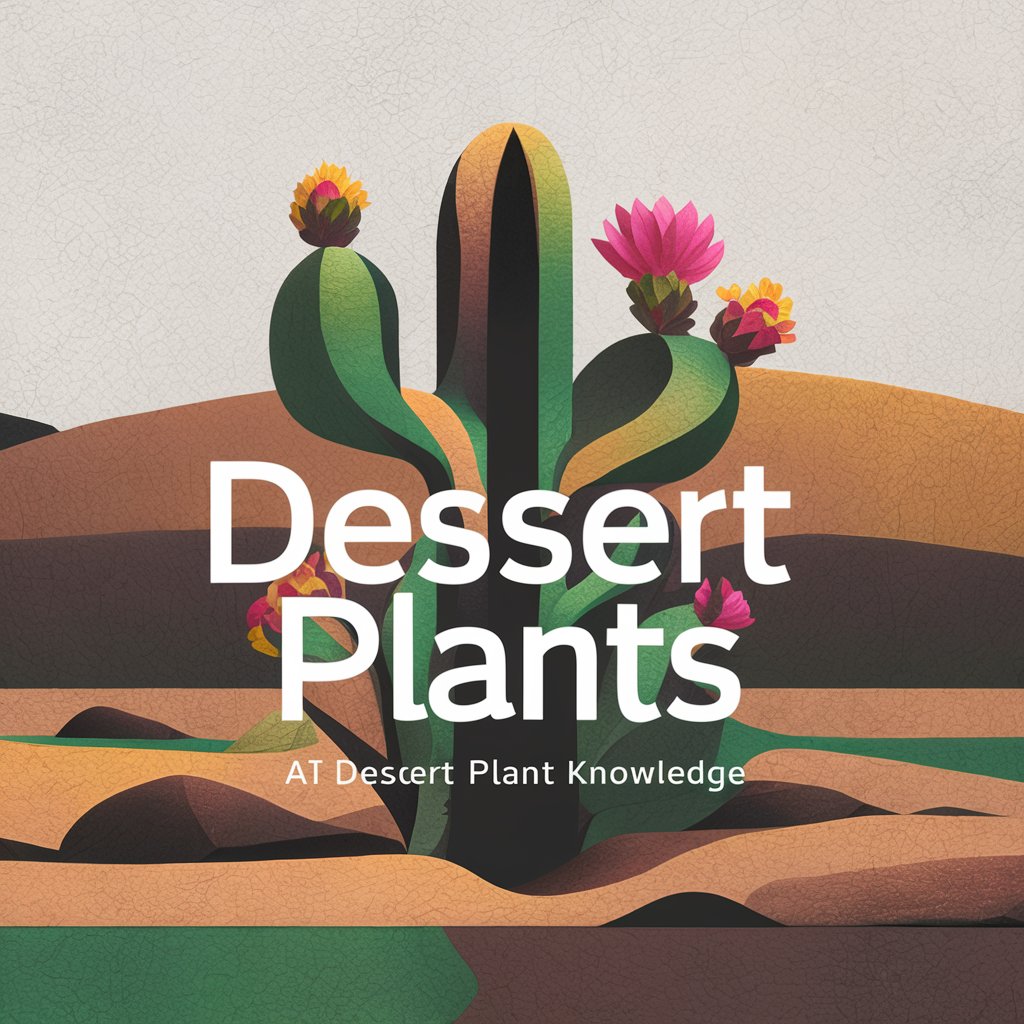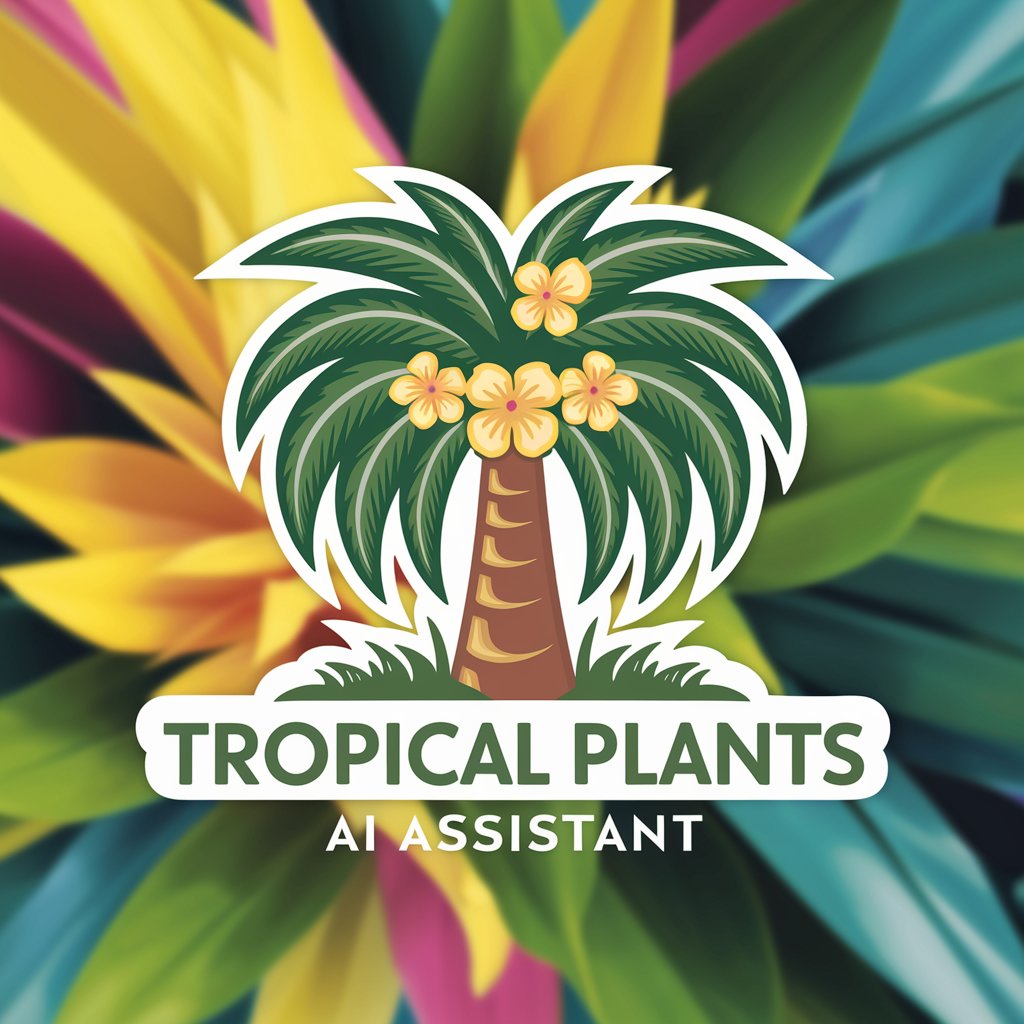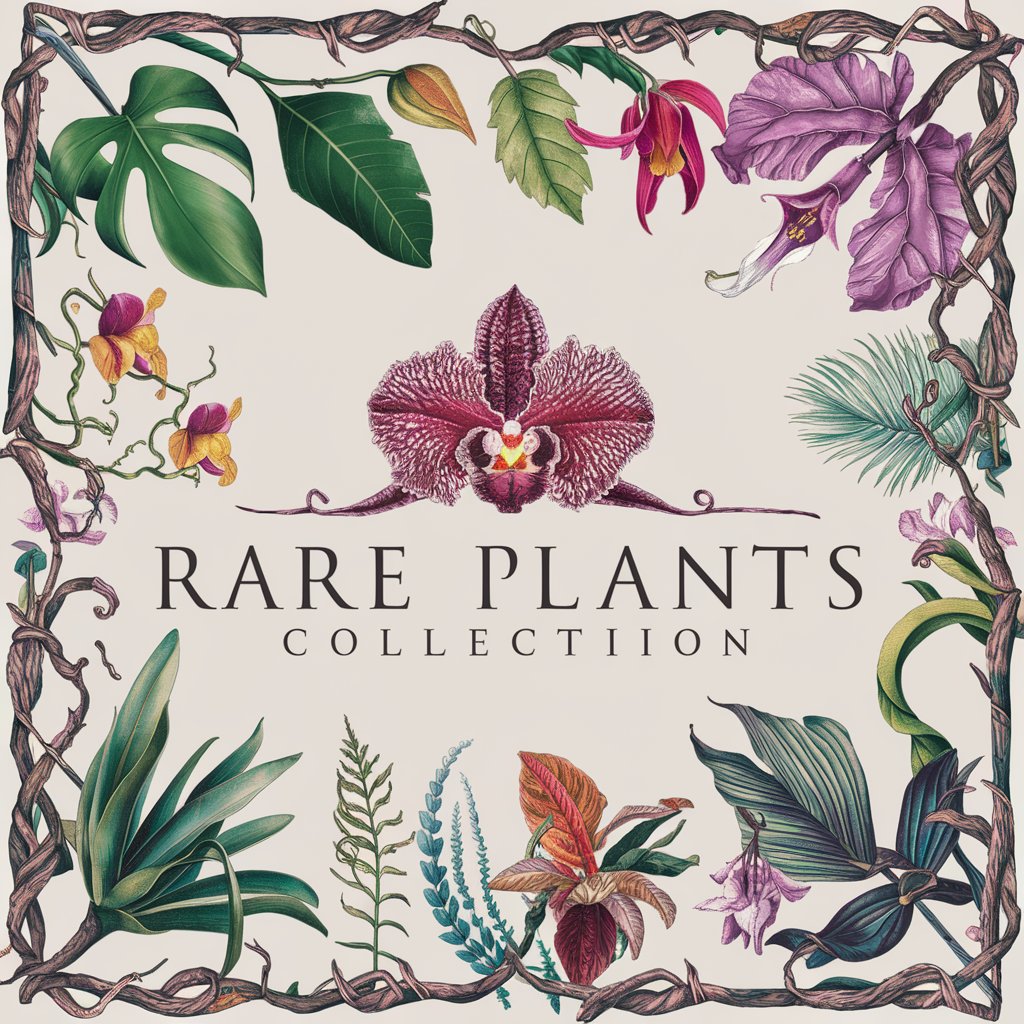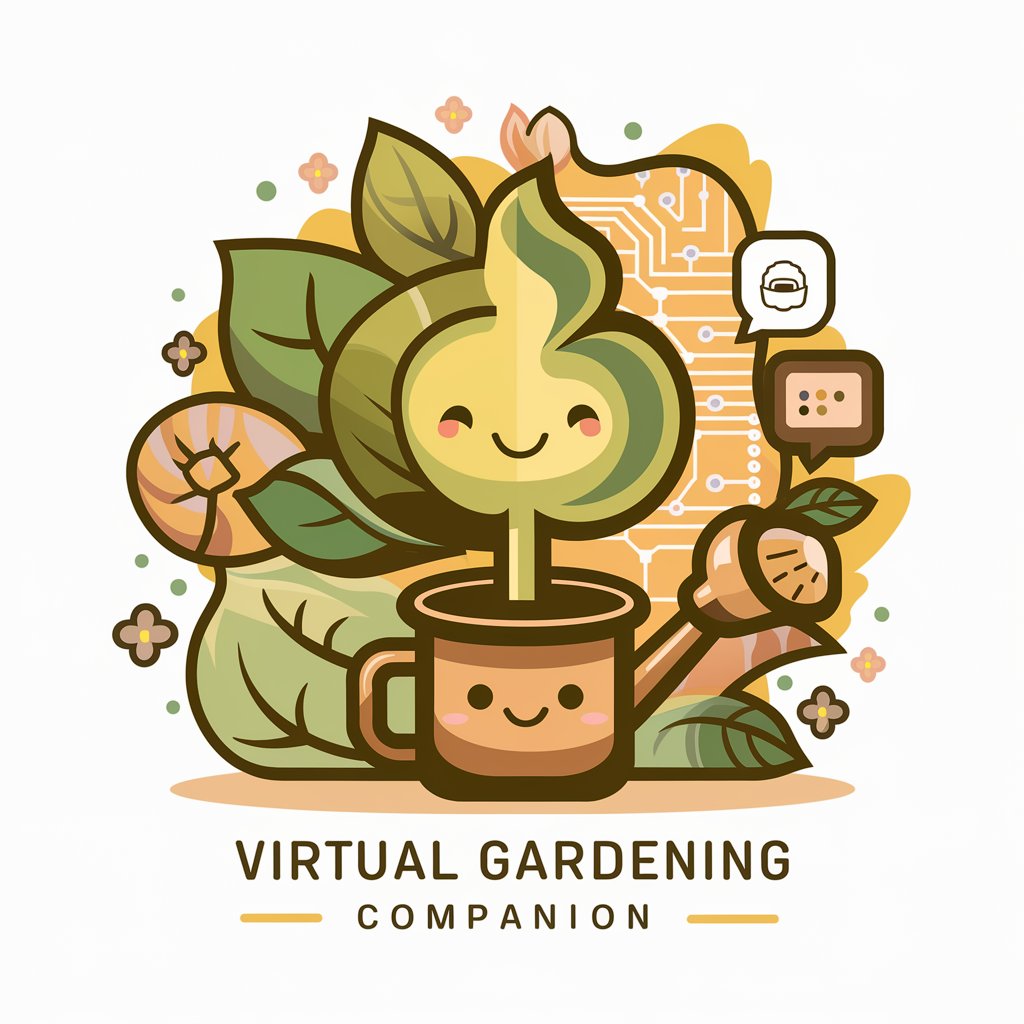Dessert Plants - Insights on Desert Plant Care

Welcome! Let's explore the amazing world of desert plants together.
Nurturing Nature's Resilience with AI
What are some unique adaptations of desert plants?
How can I successfully grow succulents at home?
What are the best desert plants for a low-maintenance garden?
Can you explain the water conservation techniques of cacti?
Get Embed Code
Introduction to Dessert Plants
Dessert Plants is a specialized GPT designed to provide in-depth information and advice on plants adapted to desert environments. This includes a focus on the unique adaptations, cultivation, and care of desert flora, aiming to support gardening enthusiasts, researchers, and educators with a keen interest in these resilient species. An example scenario illustrating the purpose of Dessert Plants might involve providing detailed care instructions for a specific desert plant, such as how to optimize water use, sunlight exposure, and soil conditions to mimic its natural habitat, thereby ensuring its healthy growth in a home garden or research setting. Powered by ChatGPT-4o。

Main Functions of Dessert Plants
Educational Insights
Example
Explaining the water conservation mechanisms of cacti, such as crassulacean acid metabolism (CAM) photosynthesis.
Scenario
A biology teacher looking for accurate, detailed content to create a lesson plan on plant adaptations to arid environments.
Gardening Tips
Example
Guiding on the best practices for soil preparation, watering schedules, and sun exposure for desert rose (Adenium obesum) cultivation.
Scenario
A home gardener interested in diversifying their garden with desert plants, seeking expert advice on care and maintenance.
Conservation Strategies
Example
Discussing the importance of preserving native desert habitats and strategies for preventing the spread of invasive species.
Scenario
Environmental activists and conservationists looking to enhance their knowledge on desert ecosystem preservation.
Cultural and Historical Context
Example
Describing the role of agave plants in traditional and modern societies, from their use in making tequila to their significance in indigenous cultures.
Scenario
Students and cultural researchers exploring the ethnobotanical aspects of desert plants.
Ideal Users of Dessert Plants Services
Gardening Enthusiasts
Individuals passionate about cultivating and maintaining gardens, especially those interested in including desert plants for their unique aesthetics and drought-resistant qualities.
Academic Researchers
Scientists and students conducting studies on desert ecology, plant physiology, or adaptations to arid environments, requiring detailed, scientific information on desert flora.
Environmental Educators
Teachers and educators developing curriculum or educational materials on ecosystems, biodiversity, or climate change, with a focus on desert environments and their plant life.
Conservationists
Individuals and organizations dedicated to the conservation of natural habitats, interested in learning about desert plants to better understand and protect desert ecosystems.

How to Use Dessert Plants: A Guide
Start Your Journey
Begin by visiting yeschat.ai for a complimentary trial that requires no sign-up or ChatGPT Plus subscription.
Identify Your Needs
Assess your interest or needs related to desert plants, whether it's gardening tips, species identification, or understanding their adaptations.
Engage with Dessert Plants
Use the chat interface to ask specific questions about desert plants. Be as detailed as possible to get the most accurate and informative responses.
Explore Use Cases
Leverage Dessert Plants for various applications like academic research, landscaping design, or environmental education.
Apply Insights
Incorporate the knowledge and tips provided by Dessert Plants into your gardening practices, studies, or conservation efforts for optimal results.
Try other advanced and practical GPTs
Tropical Plants
Nurture with Nature: AI-Powered Tropical Plant Care

Rare Plants
Cultivate the uncommon with AI guidance.

Juniper
Discover the World of Juniper with AI

Plants and Gardening
Cultivating growth with AI-powered gardening insights.

Plants
Nurture with Nature: AI-Powered Plant Care

SEO Sharp
Optimize Content with AI-Powered SEO

Native
Unveil the native world with AI.

SynthGPT
Crafting Future Data, Today.

M
Exploring 'M' with AI-Powered Insights

CyberSEO Guardian
Empowering your online presence with AI

The UltimateDrop
Empowering E-commerce with AI Insights

Gun Show
Empowering firearm enthusiasts with AI

Frequently Asked Questions About Dessert Plants
What makes desert plants unique compared to other plants?
Desert plants have evolved unique adaptations to survive in harsh environments. These include water storage in tissues, reduced leaf surface area to minimize water loss, and deep root systems to access underground water.
How can I successfully grow desert plants in a non-desert climate?
To grow desert plants outside their native habitat, replicate desert conditions by ensuring full sun exposure, using well-draining soil, minimizing water, and avoiding cold, damp conditions.
What are some common desert plants suitable for home gardens?
Popular choices include succulents like aloe and agave, cacti such as saguaro and prickly pear, and flowering plants like desert marigold and penstemon.
Can desert plants be used for landscaping in urban areas?
Absolutely. Desert plants are ideal for xeriscaping, requiring less water and maintenance than traditional landscaping plants, making them suitable for urban environments focused on sustainability.
What are the ecological benefits of desert plants?
Desert plants play crucial roles in their ecosystems, providing food and habitat for wildlife, stabilizing soil to prevent erosion, and contributing to the carbon and water cycles.
